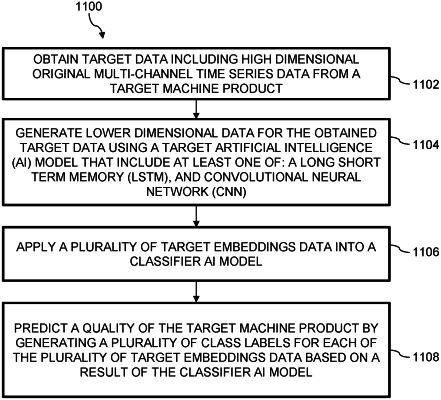| CPC G06F 8/311 (2013.01) [G06N 3/0499 (2023.01); G06N 3/08 (2013.01)] | 26 Claims |

|
1. A cross domain generalization system for industrial artificial intelligence (AI) applications, the cross domain generalization system comprising:
a hardware processor; and
a memory coupled to the hardware processor, wherein the memory comprises a set of program instructions in the form of a plurality of subsystems, configured to be executed by the hardware processor, wherein the plurality of subsystems comprises:
a target encoder subsystem configured to
obtain target data from a target machine product, wherein the target data is high dimensional original multi-channel time series data; and
generate lower dimensional data for the obtained target data using a target artificial intelligence (AI) model, wherein the generated lower dimensional data are corresponding to a plurality of target embeddings data, and wherein the plurality of target embeddings data comprise compressed representation for the original multi-channel time series data of the target machine product;
apply the plurality of target embeddings data into a source classifier AI model; and
a source classifier subsystem configured to predict a quality of the target machine product by generating a plurality of class labels for each of the plurality of target embeddings data based on a result of the source classifier AI model.
|